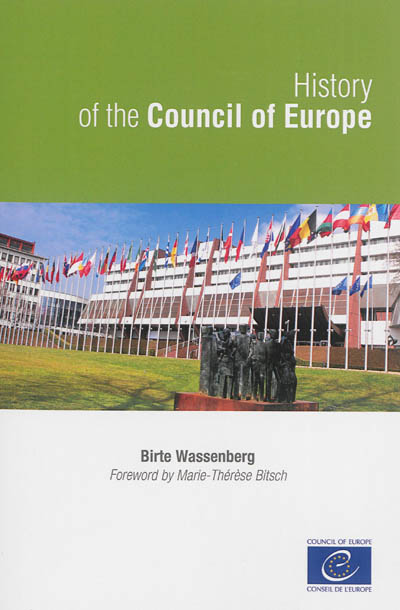en savoir plus

Permet à tous ses détenteurs d'obtenir 5% de réduction sur tous les livres lors du retrait en magasin (réduction non cumulable avec les réductions de type étudiant).
Offre également un certain nombre d'avantages auprès de nos partenaires.
Avec les favoris, retrouvez dans un espace les sélections effectuées au fur et à mesure de vos navigations dans le site.
Constituez pour votre usage personnel vos listes de livres en prévisions d'achats futurs et votre sélection d'articles, dossiers, événements, vidéos ou podcasts préférés ou à découvrir plus tard...
Il suffit simplement de cliquer sur "Ajout Favori" sur chaque page qui vous intéresse pour les retrouver ensuite dans votre espace personnel.
Requiert un compte Mollat
Requiert un compte Mollat
History of the Council of Europe
Auteur : Birte Wassenberg
en savoir plus
Résumé
Histoire de cette institution européenne, depuis sa fondation en 1949. Etudie les événements majeurs de son histoire, les visions de l'Europe dont il procède, ses forces et ses faiblesses, son rôle dans la construction européenne, ses champs d'action, etc. ©Electre 2025
Quatrième de couverture
The Council of Europe, the oldest European organisation, was founded in 1949 with the aim of unifying the continent as a whole. The decision to establish its headquarters in Strasbourg was, moreover, symbolic of the desire for reconciliation between peoples. From the outset the Council of Europe adopted an institutional structure comprising a committee of ministers and a parliamentary assembly - the first in Europe. This book retraces the history of the Organisation.
Consisting initially of Western European states, the Council of Europe was destined to embrace all the continent's countries, but the Cold War delayed its enlargement. It is only since 1989 that the Council of Europe has become a truly pan-European organisation, now comprising 47 member states.
Its mission is based on three major goals: protecting human rights, promoting democratic values and guaranteeing the rule of law. The Council of Europe is also very active in fostering co-operation in all areas of life: education, sport, culture, etc. Starting in 1959, the European Court of Human Rights grew to become the Organisation's flagship institution: its judgments are binding on the member states.
As an intergovernmental organisation, the Council of Europe has had to contend with the growth of the European Union and has sought constantly to redefine its role in international relations. In these early years of the 21st century, will it succeed in securing a key position in the European institutional architecture?
Fiche Technique
Paru le : 02/10/2013
Thématique : Droit européen
Auteur(s) : Auteur : Birte Wassenberg
Éditeur(s) :
Conseil de l'Europe
Collection(s) : Non précisé.
Contributeur(s) : Préfacier : Marie-Thérèse Bitsch
Série(s) : Non précisé.
ISBN : 978-92-871-7633-2
EAN13 : 9789287176332
Reliure : Broché
Pages : 246
Hauteur: 25.0 cm / Largeur 16.0 cm
Poids: 0 g

